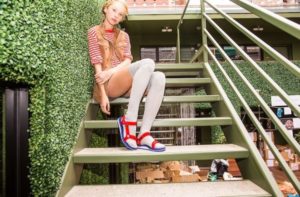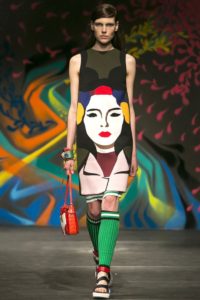Birkenstocks. Tevas. Chacos. Mark’s.
 Though you may not recognize the aforementioned shoe brands, you almost certainly have seen these “dad sandal” brands sported by millennials riding the wave of the infamous counter culture trend. Though most of the older generation has laughed and many more have scratched their heads in confusion, the dad sandal lives on as a reflection of the a growing market for “counter culture” products. Today, as millennials are set to inherit a significant portion of the purchasing power, the economic influence of counter culture trends are increasingly prevalent.
Though you may not recognize the aforementioned shoe brands, you almost certainly have seen these “dad sandal” brands sported by millennials riding the wave of the infamous counter culture trend. Though most of the older generation has laughed and many more have scratched their heads in confusion, the dad sandal lives on as a reflection of the a growing market for “counter culture” products. Today, as millennials are set to inherit a significant portion of the purchasing power, the economic influence of counter culture trends are increasingly prevalent.
Counter culture, often referred to as “being hipster,” is often known as the rise of appreciating originality and going against the grain of what would be considered mainstream. Though appreciation for alternative fashions and trends are not a new phenomenon, they have a new-found importance in today’s economy due to increased globalism and increasing uniformity. As ideas are spread faster than ever before, cultural uniformity is an undeniable byproduct. Now, being “hipster” is influencing decisions of mainstream companies and trendsetters as they look to consume products reminiscent of being different. This sincere appreciation for individualism has manifested itself in an appreciation of smaller, independent companies and brands reflecting authenticity and alternative trends.
Today, appreciation for counter culture has led to the rise of small craft breweries outpacing Budweiser at 16.1 million barrels of beer annually, a twenty percent increase of independent bookstores since 2009, and three billion dollars spent on funding more than four thousand independent feature films in 2014 (New Yorker). Even high-end fashion brands Prada and Marc Jacob’s took influence from counter culture in their 2014 Spring runway shows, where models donned strappy sandals eerily resembling the “dad sandal” made infamous by shoe brand Teva a few years prior (Fashionista). According to Lorie Pointer, global product director of Teva, they have always continued to stay true to their brand. She says, “I think that’s what’s resonating with consumers right now: We are original. This is authentic product. Trends come and go, but Teva has stayed true to our nature.” The authenticity and alternative nature of Teva compared to more mainstream brands is what entices Teva’s alternative consumers.
Teva continues to receive partnership offers with high-end fashion brands like Opening Ceremony (Fashionista) whilst the brand expands its core consumer base. Though brands like Teva catering to an increasing number of consumers seeking authenticity, alternative culture, and originality grow in popularity and influence, big brands and companies are still essential to “high income countries,” as described by Tyler Castle of American Enterprise Institute initiative called Values and Capitalism. These big companies provide goods and services at reduced costs and more efficiently than their smaller counterparts. However, as big companies grow, Americans are increasingly enticed by the diversification and trust provided by small companies like Teva. Perhaps in the future, Americans can expect to see more surprising and confusing fashion choices similar to the “dad sandal” today, reflective of an aversion to lack of diversity created by globalism.
Sources:
https://www.theguardian.com/fashion/2015/aug/18/teva-original-universal-weirdest-shoe-trend-ever-is-here-dad-sandal
Teva sandals and Ugg boots have collaborated and people are reeling
http://www.bloomberg.com/news/articles/2016-09-21/the-billion-dollar-race-for-the-ugliest-shoes
http://www.valuesandcapitalism.com/hipster-ethic-revitalizing-american-economy/
http://www.forbes.com/2008/10/01/hipster-buying-power-forbeslife-cx_ls_1001style.html
http://fashionista.com/2014/03/how-tevas-became-the-most-unlikely-it-shoe-of-the-fashion-set
http://www.newyorker.com/business/currency/small-bountiful-small-business-craft-beer

Leave a Reply
You must be logged in to post a comment.